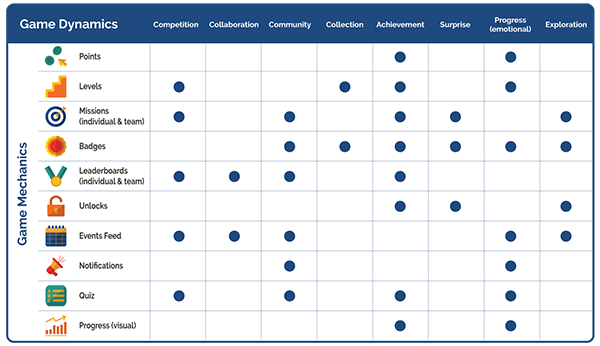Game mechanics and game dynamics
Game mechanics, which are the building blocks of gamification, are the rules and rewards that make up game play and create an engaging experience.
Scroll Down
What are game mechanics?
The essence of gamification is the application of game mechanics to “gamify” an activity. Game mechanics are the rules and rewards that build the foundation of game play. When strategically and tactically deployed in accord with game dynamics, it makes gamification challenging, fun and rewarding.
We've identified the following ten primary game mechanics, which make the foundation of gamification:
What are game dynamics?
Game dynamics refer to a set of emotions, behaviors and desires found in game mechanics that resonate with people and are used with game mechanics to foster engagement and motivate participants.
Examples of game dynamics include:
- Competition
- Collaboration
- Community
- Collection
- Achievement
- Surprise
- Progress (emotional)
- Exploration
These emotions are the compelling desires and motivation that trigger behavior economics and intrinsic motivation. Overall, these emotions are the motivations that not only define, but propel Game Dynamics.

Partner with a leader in gamification
BI WORLDWIDE expertly understands the compelling desires, motivation and data-driven insights that help fuel successful gamification programs. As an innovator with enterprise gamification, we have the experience and expertise of working with organizations across many verticals to drive inspire engagement with measurable results.
Learn how gamification can engage your audience.
















